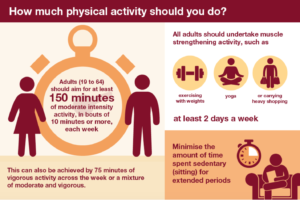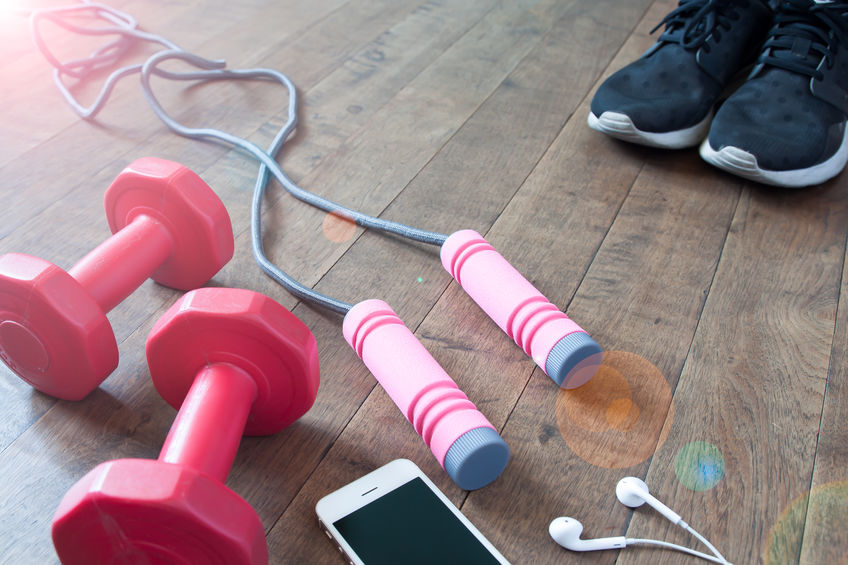Keep Moving; The benefits of Physical Activity and How to Achieve Your Goals
The preventative aspects of exercise for health
Physical activity is important for our health and wellbeing. It is believed that physical activity:
- Reduces hormones which promote cell growth and increasing mechanisms which protect the cell
- Boosts the immune system
- Reduces inflammation
- Boosts antioxidants’ pathways
- It also accelerates bowel transit, prevents obesity, and prevents metastasis.
- Improves mood
Public Health England recommends:

Physical Activity and Work
Physical inactivity is a major public health problem, resulting in an increase in obesity and chronic health problems. Engaging in regular physical activity can be challenging to do, particularly if you are working full time. Furthermore, work has increasingly become very sedentary. As a rule of thumb, we could all benefit from moving more and sitting less to gain significant health benefits, both from a physical and mental health perspective. However, during these unprecedented times, remaining physically active can seem difficult but is achievable.
Reaching Physical Activity Goals
Achieving the government recommendation for physical activity each week can be daunting, especially if you have a long term condition and during this period of restricted movement. Planning physical activity and working towards short and long term goals is an effective method of achieving this. Exercise can be built into a daily activity such as walking to the shops or housework and does not always have to be a structured exercise class or team sport.
The Chartered Society of Physiotherapy (CSP) has created an activity planner which is designed to help you plan activity over a four week period. This can be reviewed and modified for ongoing use to ensure you achieve your longer-term activity goals
You can download the CSP activity planner here
Tips for Overcoming Barriers to Physical Activity
- Use an activity planner to plan a weekly activity to achieve short term goals. Use the planner to track progression and reflect on change at the end of week 4.
- When starting to engage in physical activity, begin with small goals and build up activity levels slowly. This will help you to build confidence and get to know how your body responds to these challenges.
- It’s common to get mild aches and pains when you start something new. This doesn’t mean you have hurt yourself or made your condition worse.
- Find an exercise buddy via activity trackers or join a virtual group/class– evidence shows that makes you more likely to keep going.
- If you miss your goals or feel that you didn’t do as well as you liked, don’t be too hard on yourself. Start again and set new goals.
Suggestions for Achieving Physical Activity Goals during Covid-19 Pandemic
To help us achieve regular exercise during this challenging time, there is a wealth of resource and support available. Below are a number of links to professional organisations providing this form of information relevant to us all;
Working To Wellbeing (W2W) provides consultancy and intervention for health and wellbeing at work. We provide wellbeing and rehabilitation services, supporting employees with physical health, mental health and long term conditions, the 3 key causes of presenteeism and absence. We join the dots between the physical and mental health issues that cause and perpetuate poor health.
Our specialist clinicians are highly trained to provide a truly integrated service that results in health behaviour change and optimum work capability.
To find out more contact us here


